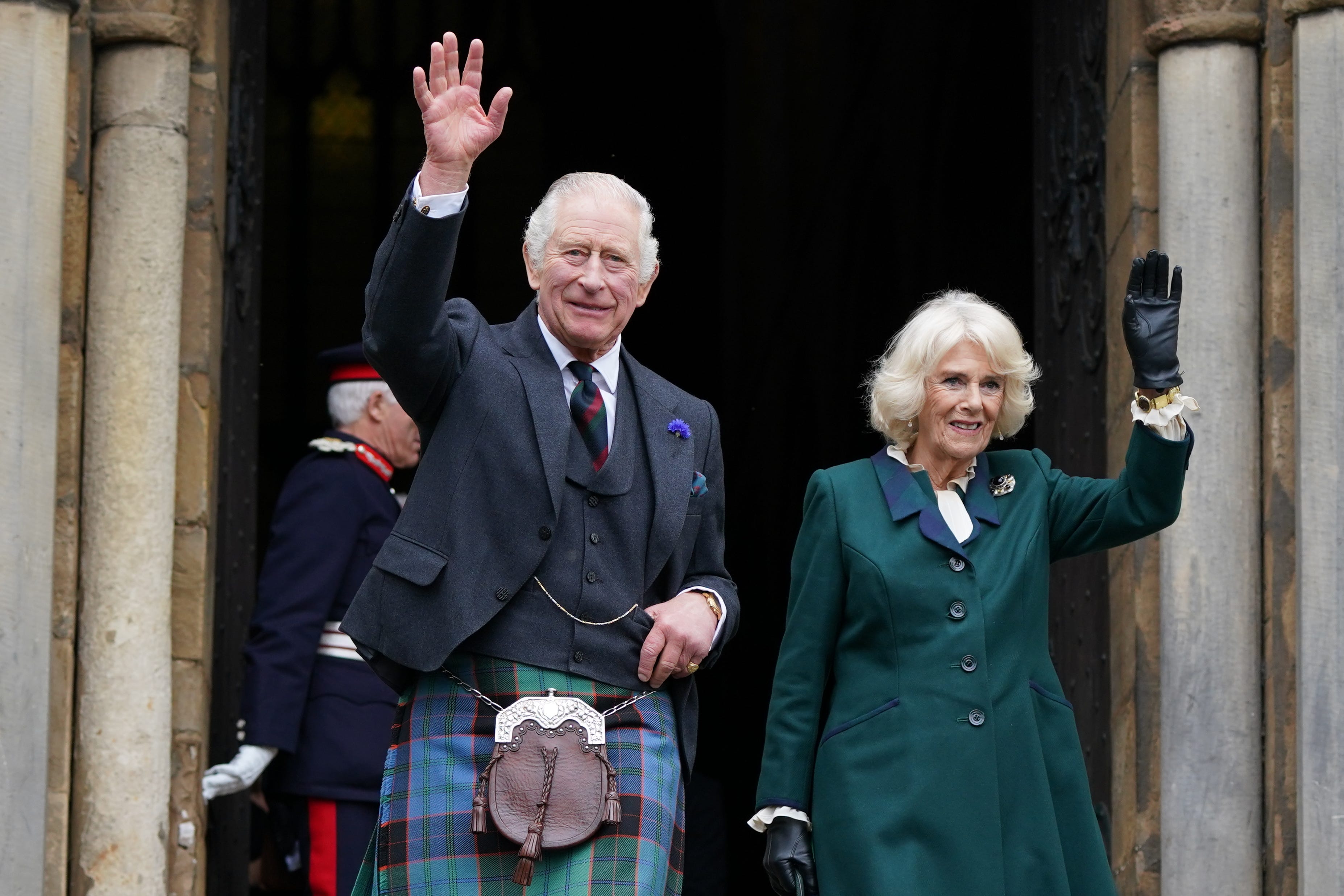In Pictures: Crowds line streets as King and Queen Consort visit Dunfermline
King Charles III conferred city status on Dunfermline in Fife and also visited Dunfermline Abbey to mark its 950th anniversary.

The King and the Queen Consort have held their first joint public engagements since royal mourning ended by visiting Dunfermline in Fife to mark the former town becoming a city.
King Charles III offered his “warmest congratulations” to Scotland’s newest city as he said conferring the honour on Dunfermline would “gladden my dear mother’s heart”.
Charles conferred city status on the former town, which was one of eight communities awarded the honour as part of the late Queen’s Platinum Jubilee celebrations.
In a ceremony in Dunfermline City Chambers, Charles said he had been “delighted” when the announcement of city status was made in May.
He spoke of his mother’s “deep love for Scotland”, describing it as “one of the foundations of her life”.
The King highlighted the new city’s “immense significance” in Scottish history as the birthplace of entrepreneur and philanthropist Andrew Carnegie.
Dunfermline is also the “burial place of kings and queens”, Charles noted, with Robert the Bruce, who led Scotland in a war against England in the 1300s, buried in the abbey there.
Bookmark popover
Removed from bookmarks